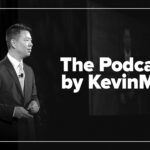For years, empathy has been seen as a moral virtue that binds relationships, the antidote to pain and suffering while caring for patients. But lately, empathy is facing a surprising backlash in society and the medical profession. From being called “toxic” to being labeled outright as a “sin,” the virtue of feeling others’ pain is now under sharper scrutiny across ideological, psychological, and even religious groups within our society.
In caregiving professions, unchecked empathy can lead to compassion fatigue, where caregivers become emotionally drained, diminishing their capacity to provide effective care. This over-identification can blur personal boundaries, causing individuals to internalize others’ suffering excessively. Thus, while empathy is generally considered beneficial, its unregulated form—termed toxic empathy—can be detrimental.
When empathy becomes toxic
The term “toxic empathy” has entered recent discourse to describe the darker side of emotional over-involvement—when people internalize the emotions of others to the point of harming themselves. Life coach Kamini Wood defines toxic empathy as overidentifying with another person’s suffering in a way that drains your own emotional resources and blurs healthy boundaries. “You feel the person’s pain so deeply that it becomes yours,” she explains in a widely shared article on LinkedIn.
From virtue to vice: Empathy as a “sin”?
Beyond the psychological dimensions, the backlash against empathy also manifests in ideological and philosophical critiques. Some commentators argue that empathy is too selective and prone to bias. The philosopher Paul Bloom, in his book Against Empathy, argues that empathy leads to irrational and unjust decisions because people naturally feel more empathy for those who look like them and share their values. As a result, empathy can reinforce in-group favoritism and overlook broader systemic issues. Bloom suggested that this can result in skewed moral decisions that favor individuals over broader, systemic solutions. He advocates for “rational compassion”—caring guided not by emotional resonance, but by thoughtful analysis.
Perhaps more provocatively, some voices in cultural discourse have begun to frame empathy itself as a kind of sin—not in the religious sense, but as a moral failing or weakness in a hyper-competitive, individualistic world. In certain business environments, empathy is derided as naive or counterproductive. The ethos of “tough love” or “rational detachment” is prized over emotional sensitivity. Empathy is cast as a distraction from hard choices, a soft sentimentality that clouds judgment or weakens resolve. In extreme cases, this viewpoint dehumanizes empathy and compassion.
Empathy is getting recalibrated.
Even those critical of empathy don’t necessarily want to discard it. Instead, they call for a more measured, intentional empathy—one that includes emotional boundaries, self-care, and critical thinking. This cultural turn against empathy is not without consequences. As the legitimacy of empathy is questioned, there is a risk of eroding the social fabric that holds communities together with empathy, compassion, and kindness in our prosocial behaviors required in clinical practice. Empathy plays a critical role in conflict resolution, cross-cultural understanding, and collective healing. While empathy and compassion may be imperfect, it remains one of the few tools we have for bridging divides and acknowledging shared humanity. To reject empathy wholesale, or to stigmatize it as inherently toxic or sinful, is to risk promoting a more fragmented and self-centered world.
That said, the backlash also serves as a useful corrective. When coupled with wisdom, kindness, boundaries, and critical thinking, empathy can be a powerful force for humanity. The key is not to abandon empathy but to cultivate it responsibly—to recognize when it empowers and when it overwhelms, when it heals and when it harms.
Here are some examples of avoiding toxic empathy at bedside with patients
1. Practice compassionate detachment. Care deeply without absorbing the patient’s suffering as your own. It’s the difference between saying, “I see how hard this is for you” vs. “I feel your pain.”
2. Set emotional boundaries. Be clear internally: “This is their suffering, not mine to carry.” Notice when you begin to fuse with the patient’s distress and gently step back.
3. Ground yourself. Do a quick self-check-in before and after emotionally charged encounters. Ask, “What am I feeling right now?” “Is this mine to carry?”
4. Use mindful language. Instead of “I can’t imagine,” say, “That sounds incredibly hard.” This creates connection without emotional over-identification.
Conclusion
The current critique of empathy reflects complex social, psychological, and ideological dynamics. While terms like “toxic empathy” and the framing of empathy as a “sin” may seem reactionary or extreme, they point to real tensions in the health care profession. Rather than discarding empathy, the challenge ahead lies in reimagining and refining it—not as an unthinking emotional reflex, but as a deliberate, practiced skill.
Empathy may no longer enjoy unconditional praise, but this cultural pushback isn’t necessarily bad. In fact, it reflects a deeper understanding that feeling with others—without losing ourselves—is a skill that must be practiced, not a reflex that should rule us. In an emotionally charged and morally complex world, perhaps empathy isn’t disappearing—it’s evolving.
Vijay Rajput is an internal medicine physician.




















![Sibling advice for surviving the medical school marathon [PODCAST]](https://kevinmd.com/wp-content/uploads/Design-1-190x100.jpg)

![Leadership buy-in is the key to preventing burnout [PODCAST]](https://kevinmd.com/wp-content/uploads/Design-4-190x100.jpg)
![Understanding the unseen role of back-to-school diagnostics [PODCAST]](https://kevinmd.com/wp-content/uploads/Design-3-1-190x100.jpg)
